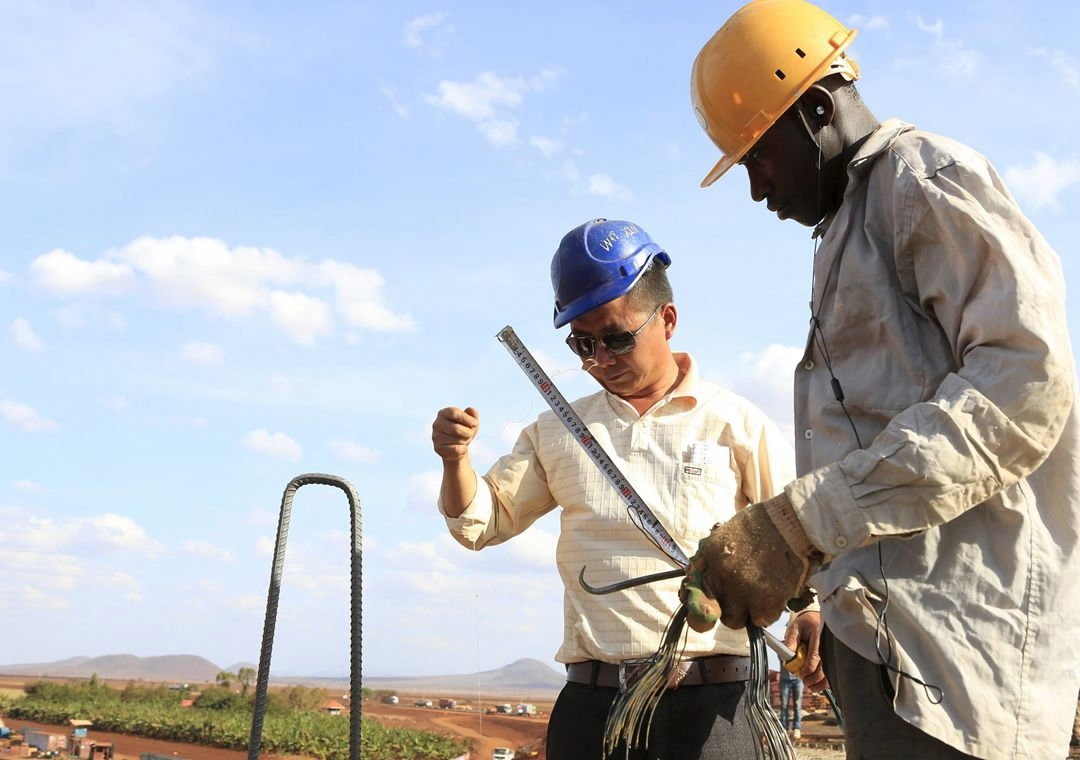By CGTN Africa
Billed as the biggest project in Kenya since independence, the first phase of the country's Standard Gauge Railway (SGR) is ready for operation, and is expected to be launched on May 31 by President Uhuru Kenyatta.
The Chinese-funded project will significantly ease movement of people and goods between Kenya’s coastal city of Mombasa and the capital Nairobi. Ultimately, the line is expected to go beyond Kenya’s borders into Uganda, Rwanda, Burundi, the Democratic Republic of Congo, and South Sudan.
The Mombasa-Nairobi phase of the project was built at cost of 3.8 billion US dollars, with China Exim Bank providing 90 percent of the financing while the remaining 10 percent was contributed by the Kenyan Government.

A Chinese construction engineer works at a section of the Mombasa-Nairobi standard gauge railway at Emali in Kenya October 10, 2015. /VCG Photo
The single-track standard gauge railway between Mombasa and Nairobi stretches 472 kilometers out of the total length, 609 kilometers.
While passengers spend more than 10 hours traveling between the two cities, the SGR trains will shorten that duration to about 4-5 hours.
Also, it will take about eight hours for the cargo train to travel between Nairobi and Mombasa, unlike the trucks that spend more than two days making that journey.
The railway line is designed to transport 22 million tonnes of cargo a year, or a projected 40 percent of Mombasa Port throughput by 2035.
The passenger trains will shuttle at an average speed of 120km/h, while the cargo trains, 80km/h.
During the launch of the SGR, President Uhuru will be joined by other high-profile dignitaries including Chinese ambassador to Kenya Liu Xianfa, vice president William Ruto, and transport minister James Wainaina Macharia.
The delegation is expected to take the inaugural train ride from Mombasa to Nairobi, thereafter opening the line for public use.
While laying the foundation stone for the project in 2013, Uhuru said, “The project will define my legacy as president of Kenya. What we are doing here today will most definitely transform… not only Kenya but the whole eastern African region.”









